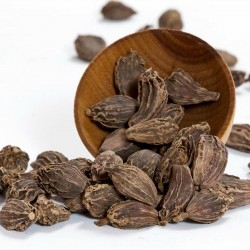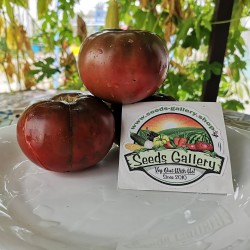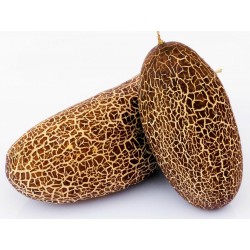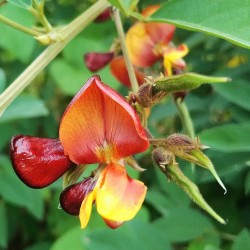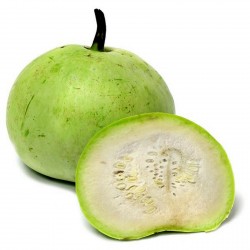Seeds Gallery Com,
5/
5
<h2><strong>Semințe de mazăre porumbel (Cajanus cajan)</strong></h2>
<h2><span style="color: #ff0000;" class=""><strong>Preț pentru pachetul de 10 (1.5g) semințe.</strong></span></h2>
<p>Mazărea porumbel (Cajanus cajan), cunoscută și sub numele de pigeonpea, gram roșu, tur, pwa kongo în Haiti, guandú și frijol de palo în Ibero-America sau ca mazăre gungo în Jamaica, este o leguminoasă perenă din familia Fabaceae. De la domesticirea sa în subcontinentul indian cu cel puțin 3.500 de ani în urmă, semințele sale au devenit un aliment obișnuit în Asia, Africa și America Latină. Se consumă pe scară largă în Asia de Sud și este o sursă majoră de proteine pentru populația din subcontinentul indian. Este acompaniamentul principal pentru orez sau roti (pâine plată) și are statutul de hrană de bază pe toată lungimea și lățimea Indiei.</p>
<p>Mazărea porumbelului este o plantă perenă care poate crește într-un copac mic.</p>
<p>Cultivarea bobului de mazăre se întoarce cu cel puțin 3.500 de ani în urmă. Centrul de origine este probabil India peninsulară, unde cele mai apropiate rude sălbatice (Cajanus cajanifolia) apar în pădurile de foioase tropicale. Descoperiri arheologice de mazăre de porumbel datând în urmă cu aproximativ 3.400 de ani (secolul al XIV-lea î.Hr.) au fost găsite în siturile neolitice din Kalaburagi, Karnataka (Sanganakallu) și zonele sale de frontieră (Tuljapur Garhi în Maharashtra și Gopalpur în Orissa) și, de asemenea, în statele din sudul Indiei. ca Kerala, unde se numește Tomara Payaru. Din India a călătorit în Africa de Est și Africa de Vest. Acolo, a fost întâlnit pentru prima dată de europeni, așa că a obținut numele de Mazăre Congo. Prin intermediul comerțului cu sclavi, a ajuns pe continentul american, probabil în secolul al XVII-lea.</p>
<p>Utilizări</p>
<p>Mazărea porumbel este atât o cultură alimentară (mazăre uscată, făină, fie mazăre verde vegetală), cât și o cultură furajeră / acoperitoare. În combinație cu cerealele, mazărea porumbelului face o masă bine echilibrată și, prin urmare, sunt favorizate de nutriționiști ca un ingredient esențial pentru diete echilibrate. Mazărea uscată poate fi încolțită scurt, apoi gătită, pentru o aromă diferită de mazărea verde sau uscată. Înmugurirea îmbunătățește, de asemenea, digestibilitatea mazărei porumbei uscate prin reducerea zaharurilor nedigerabile care altfel ar rămâne în mazărea uscată gătită.</p>
<p>În India, este una dintre cele mai populare leguminoase, fiind o sursă importantă de proteine într-o dietă preponderent vegetariană. În regiunile în care crește, păstăile tinere proaspete sunt consumate ca legume în feluri de mâncare precum sambar. Mazăre întregi de porumbei sunt numite arhar dal în hindi. În Etiopia, nu numai păstăile, ci și lăstarii și frunzele tinere sunt gătite și mâncate.</p>
<p><br />Kenienii decojind mazărea porumbel<br />În unele locuri, cum ar fi coasta Caraibelor din Columbia, Republica Dominicană, Panama și Hawaii, mazărea de porumbel este cultivată pentru conserve și consum. Un fel de mâncare din orez și mazăre porumbel verde (numit moro de guandules) este un aliment tradițional în Republica Dominicană. Mazărea porumbel se face și ca tocăniță, cu bile de pătlagină. În Puerto Rico, arroz con gandules se face cu orez și mazăre porumbel și este un fel de mâncare tradițional, mai ales în timpul sezonului de Crăciun. Jamaica folosește, de asemenea, mazăre porumbel în loc de fasole în vasul de orez și mazăre, în special la Crăciun. Trinidad și Tobago și Grenada au propria lor variantă, numită pelau, care include fie carne de vită, fie pui, și ocazional dovleac și bucăți de coadă de porc vindecată. În departamentul Atlántico din Columbia, sopa de guandú con carne salada (sau pur și simplu „gandule”) este făcută cu mazăre de porumbel.</p>
<p>Mazărea porumbel este în unele zone o cultură importantă pentru gunoiul de grajd verde, furnizând până la 90 kg de azot la hectar. Tulpinile lemnoase ale mazărei porumbei pot fi folosite și ca lemne de foc, garduri și stuf.</p>
<p>Este un ingredient important al hranei pentru animale utilizat în Africa de Vest, în special în Nigeria, unde este, de asemenea, cultivat. Frunzele, păstăile, semințele și reziduurile prelucrării semințelor sunt folosite pentru a hrăni toate tipurile de animale.</p>
<script src="//cdn.public.n1ed.com/G3OMDFLT/widgets.js"></script>
VE 48 (1.5g)




